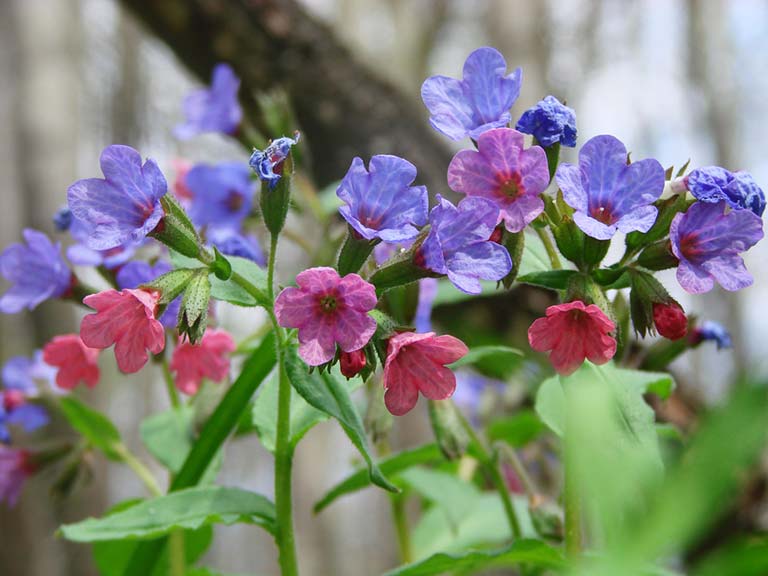Perennial plants live for many years and get better with each passing year. They are best planted in the spring or fall and they grow and bloom through the spring and summer and die back in the fall and winter only to return the following spring from the underground rootstock.
Perennials are versatile and are available in a vast array of colors and sizes but sometimes it is best to get to know a few of the all-time charmers.
Favorite Perennial Plants for Spring
#1. Aquilegias

These colorful plants, also called columbine plants, are available in a range of colors, blue, pink and white plus a range of color-combinations.
They have bonnet shaped flowers and they bloom endlessly in late spring. They will grow in sun or partial shade to a height of 6” to 24”.
#2. Bergenia

The Bergenia plant is a clump forming perennial which will grow up to 24” and will bloom in early spring. Its pink flowers are small and plentiful borne on stems high above the foliage.
It does well in sun or partial shade. It likes a humus rich soil and good drainage. For new plants next year divide the clumps after flowering. It is also called Elephant’s Ears.
#3. Dicentra

This perennial is also known as Bleeding Heart and is very easy to grow in either full sun or partial shade.
It grows to about 30” high and its abundant pink and white, pendant like blooms weigh down the branches in April. Keep the soil moist.
#4. Helleborus

The common name is Lenten Rose and it blooms late winter to early spring. These plants will grow in moist soil types and they like the shade, even full shade will be tolerated.
They will reach 24” high and come in a variety of shades, pink, yellow, purple, white and many variations in between. They self seed but can also be divided in late fall although it is best to leave older plants alone.
#5. Pulmonaria

A nice companion in a mixed perennial planting is the purple flowers of the pulmonaria plant. It blooms in early spring and grows to 12” with green or greenish/silver foliage.
It prefers shade but will tolerate any soil type. It is a hardy plant down to U.S. zone 3 type temperatures. It is susceptible to mildew but once spotted just pull the leaves off the plant and destroy them. New leaves will grow back in less than two weeks.
Caring for Perennial Plants
By their very nature perennial plants are almost trouble free, they come, bloom, die back and sleep. When planting out nursery bought plants read any instructions about planting carefully and getting the site right is important. There are a few points about caring for perennials which should be familiarized.
- So as not to have perennial weeds vying for space with perennial plants prepare the soil in advance of planting by digging well and removing all weeds and seed pods. Add plenty of farmyard manure if available or substitute with rich humus.
- Feeding. This is best done in early spring with a general purpose fertilizer. Read the instructions but normally 2oz per square yard is enough.
- Pruning will not be necessary but cutting back the dying stalks will be and this is best done in the fall. Cut the dead stalks right back to the ground and apply some garden mulch to protect from frost.
- During the flowering season dead-head any faded blooms as it is not a good idea to let perennials put all their energy into making seed pods.
- Most perennials like moisture so keeping the soil moist is important.
- Many perennial plants have their flowers borne on light stalks so some support with bamboo canes may be necessary. Bamboo canes can be split into quarters to save on expense.
Spring perennial plants are ideal for growing with favorite spring bulbs as they both herald a new beginning in the garden. For added effect the colorful flowers of these early perennials often benefit by being planted amongst some lush evergreen hosta leaves.


